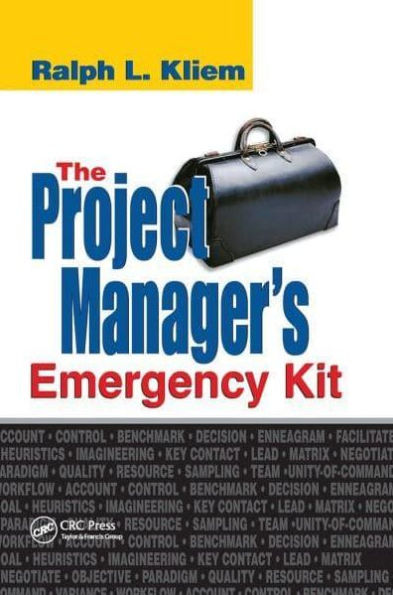Table of Contents
A 1
Activity-Based Costing and Traditional Accounting 1
Affinity Diagram 2
Alternative Working Schedules 3
B 5
Bar (Gantt) Charts 5
Benchmarking 6
Body Language 7
Brainstorming 7
Breakeven Analysis 8
Budgeting 9
C 11
Capability Maturity Model 11
Capacity Planning 12
Categories of Change 12
Cause-and-Effect Graph 13
Change Board 14
Change Control 15
Change Implementation 16
Checkpoint Review Meeting 16
Chunking 17
Client 18
Collecting Statistics 19
Communication Diagram 20
Communications Process 21
Configuration Management 21
Conflict Resolution 22
Consultants and Contractors 23
Contingency Planning 24
Continuous Improvement 24
Contracts 25
Controlling 26
Controls 27
Core Team 28
Cost Analysis 29
Creativity 29
Critical Chain 30
Critical Issues and Action Items Log 31
Critical Path 32
D 33
Decision Making 33
Decision Tables 34
Decision Trees 35
Dependency Relationships 36
E 39
Early and Late Start and Finish Dates 39
Earned Value 40
E-Mail 41
Emotional Intelligence 42
Enneagram 42
Entity-Relationship Diagrams 43
Estimating 44
F 47
Facilitation 47
Fast Tracking 48
Fishbone Diagram 49
Forms 50
Forward and Backward Passes 51
Frameworks and Methodologies 51
Functional Hierarchy Diagram 52
G 55
Globalization of Projects 55
Goal 55
Golden vs. Iron triangle of Project Management 56
Groupthink 57
H 59
Herzberg Theory of Motivation 59
Heuristics 59
I 61
Imagineering 61
Information Life Cycle 61
Internal Rate of Return 62
Interviewing 63
Intuition 64
ISO 9000 64
Issue-Action Diagram 65
K 67
Key Contact Listing 67
L 69
Lag 69
Lateral and Vertical Thinking 70
Leadership Skills 71
Leadership: Communicating Skills 71
Leadership: Interpersonal Skills 72
Leadership: Modeling Skills 73
Leadership: Team Bonding Skills 73
Leading 73
Leading: Being Supportive 74
Leading: Communicating 75
Leading: Maintaining Direction 76
Leading: Making Effective Decisions 76
Leading: Motivating 77
Leading: Providing Vision 77
Leading: Using Delegation Properly 78
Learning Curve 78
Learning Style 79
Left and Right Brain Thinking 80
Lessons Learned 81
Leveling 81
Listening and Hearing 83
Logical and Physical Designs 84
M 85
Managerial Grid 85
Maslow Hierarchy of Needs 86
Matrix and Task Force Structures 87
Matrix 89
Mean, Median, and Mode 89
Meetings 90
Memo 91
Memorization 92
Mentoring vs. Coaching 92
Metrics 93
Mind Mapping 94
Modeling 95
Multiple Intelligences 96
Multivoting 97
Myers-Briggs Type Indicator 97
N 99
Negotiating 99
Net Present Value 100
Network Diagram 100
Neural Nets 102
Nominal Group Technique 103
O 105
Object and Process Models 105
Objectives 106
Organization Chart 107
Organizational Engineering 108
Organizing 109
Outsourcing 109
P 111
P2M2 111
Paradigm 111
Pareto Analysis Chart 112
Parkinson's Law 113
PDCA Cycle 114
Peak Experience 115
PERT Estimates 116
Peter Principle 117
Planning 118
Post-Implementation Review 118
Power 119
Presentation 120
Presentation: Perception 120
Presentation: Performance 121
Presentation: Perspective 121
Presentation: Planning 122
Presentation: Practice 122
Presentation: Preparation 123
Priorities of Change 123
Probability 124
Problem Solving 125
Procedures 126
Project 126
Project History Files 127
Project Library 128
Project Life Cycle 128
Project Management 129
Project Management Software 130
Project Manager 132
Project Manual 132
Project Newsletter 133
Project Office 134
Project Sponsor 134
Project Team 135
Project Wall 136
Project Website 137
Prototyping 137
Q 139
Quality Assurance 139
Quality 140
R 141
Reengineering 141
Regression and Correlation Analysis 141
Replanning 142
Reports 143
Requirements Definition 143
Resource Allocation 144
Responsibility Matrix 145
Reuse 146
Risk Analysis 147
Risk Assessment 147
Risk Control 148
Risk Management 148
Risk Reporting 149
S 151
Sampling 151
Scattergram 152
Scheduling 153
Scope Creep 154
Security 155
Self-Directed Work Teams 156
Senior Management 156
Six Hats 157
Skills Matrix 158
Social Behavior Typology 159
Span of Control 159
Speed Reading 160
Staff Meetings 161
Stakeholders 162
Standard Deviation, Variance, and Range 162
Statement of Work 164
Statistical Process Control 166
Statistics 167
Status Assessment 168
Status Collection 168
Status Review Meeting 169
Stewardship 170
Strategic Planning 171
Supplier Management 171
Supply Chain Management 172
Systems Theory 173
T 175
Team Building 175
Team Organization 175
Teaming Basics 176
Technology Transfer 177
Telecommuting 178
Testing 178
Time Management 179
Top-Down and Bottom-Up Thinking 180
Total Float 181
Tracking and Monitoring 182
Training 183
Transactional Analysis 183
Tuchman Model 184
U 187
Unity-of-Command Principle 187
V 189
Variance 189
Videoconferencing 189
Virtual Teaming 190
W 193
Winding Down 193
Work Breakdown Structure 193
Workflow Analysis 198
Work Flows 199
Workplace Design 200
Writing 200
References 203



